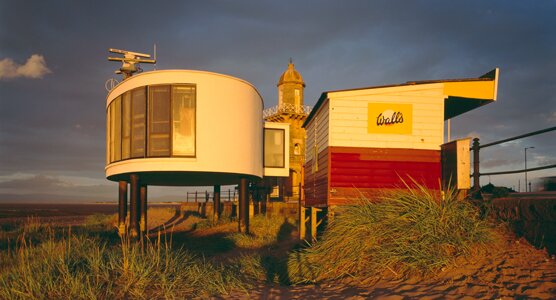Listed Buildings

Listing helps us acknowledge and understand our shared history. It marks and celebrates a building's special architectural and historic interest, and also brings it under the consideration of the planning system so that some thought will be taken about its future.
Anyone can suggest a building to English Heritage for listing by using our online application form. We examine the case and make a recommendation, but the decision on whether to list is taken by the Secretary of State for Culture, Media and Sport. The Secretary of State may also take the advice of other experts before making the final decision. When buildings are listed they are placed on the statutory list of buildings of 'special architectural or historic interest'. You can search for listed buildings in your area on The National Heritage List for England.
These are compiled by the Secretary of State for DCMS under the Planning (Listed Buildings and Conservation Areas) Act 1990.
- Grade I buildings are of exceptional interest, sometimes considered to be internationally important. Just 2.5% of listed buildings are Grade I.
- Grade II* buildings are particularly important buildings of more than special interest. 5.5% of listed buildings are Grade II*.
- Grade II buildings are nationally important and of special interest. 92% of all listed buildings are in this class and it is the most likely grade of listing for a home owner.
In England there are approximately 372,905 listed building entries. (An entry can sometimes include more than one building – such as a terrace).
How are buildings chosen?
Buildings and structures are assessed to define their significance with the greatest care. Many old buildings and indeed recent buildings are interesting, but listing identifies only those which are of national 'special interest'. The main criteria used are:
- Age and rarity: most buildings built before 1700 which survive in anything like their original condition are listed, as are most of those built between 1700 and 1840. The criteria become tighter with time, so that buildings built within the last 30 years have to be exceptionally important to be listed, and under threat too. A building has to be over 10 years old to be eligible for listing.
- Architectural interest: buildings which are nationally important for the interest of their architectural design, decoration and craftsmanship; also important examples of particular building types and techniques.
- Historic interest: this includes buildings which illustrate important aspects of the nation's social, economic, cultural or military history.
- Close historical association with nationally important people or events.
- Group value, especially where buildings are part of an important architectural or historic group or are a fine example of planning (such as squares, terraces and model villages)
The published Principles of Selection for Designating Buildings are available to download in pdf format from the English Heritage website and provide much more information on the approach to assessing buildings and structures.
Review process for listing decisions
If someone considers that a decision about a building has been wrongly made, they may write to the Listing Review Officer at the Department for Culture, Media and Sport within 28 days of notification of the decision to request that the Secretary of State conduct a review of the decision. An example of a decision made wrongly would be where there was a factual error or an irregularity in the process which affected the outcome. You may also ask the Secretary of State to review the decision if you have any significant evidence relating to the special architectural or historic interest of the building which was not previously considered. Further details of the review criteria, process and how to request a review are available in our review guidance and from the .
Contact
E-mail for listing enquiries
What's New?
-
The National Heritage List for England is now live on the English Heritage website.
-
Welcome to the HER21 page. This page offers access to the full suite of HER21 project reports.
